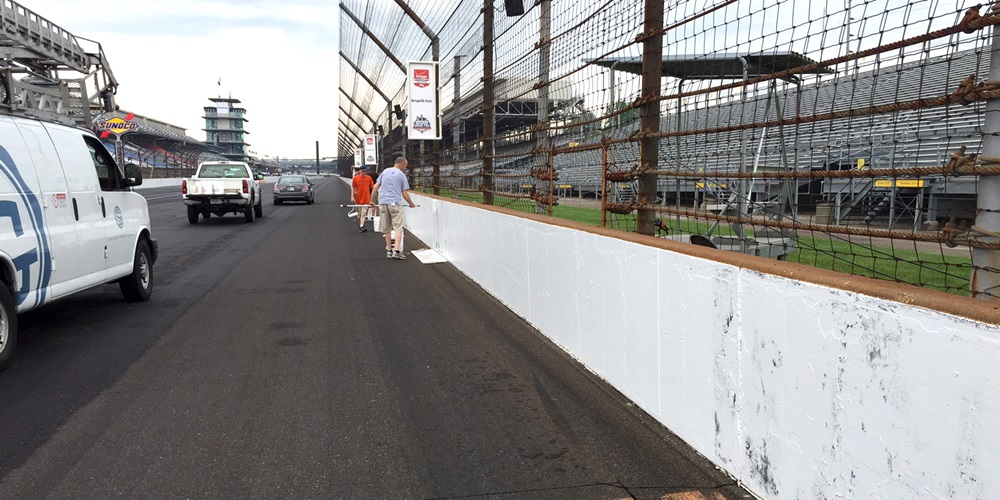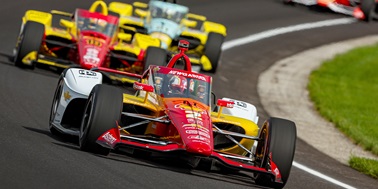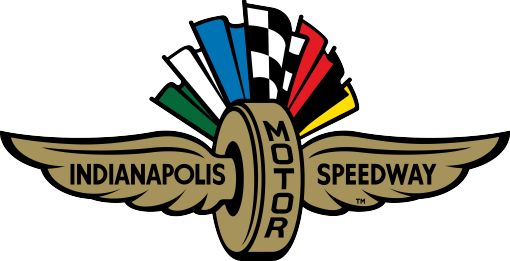It starts at the checkered flag of the Angie's List Grand Prix of Indianapolis. And it is nothing short of a Herculean effort. I’m talking about the track conversion, how long it takes and how many people are involved. Questions about the track conversion from road course to oval configuration are some of the most often asked of me this time of year.
As the Indianapolis Motor Speedway and the facility become so much more than just events on the oval, converting the track from one stage to another has become more and more routine for the men and women at the Indianapolis Motor Speedway. However, it is still a monumental task – one that takes hours of planning and coordination before the actual work even begins.
When the checkered flag dropped on Saturday, even while Will Power was still doing media interviews and celebrating his victory, the Verizon IndyCar Series teams began to relocate their pit boxes in preparation for practice to kick off the run up to the 99th Running of the Indianapolis 500. They may not have known it, but they officially put this year’s track conversion in motion.
Once the public Track Invasion was completed, the signage crew took to the track to begin to remove the nearly two miles of signage that was on the walls of the Indianapolis Motor Speedway racetrack. Because this was the first year we had put that kind of signage on the walls, we weren't sure how much paint work would need to be done when it was removed. We quickly learned that it would be nearly the same amount – two miles – of paint that needed to be applied before Monday at noon when the track was scheduled to go green. It wasn’t because paint had come off, but rather the residue from the glue that held the banners to the wall gave them a white-grey look. Our fans expect our walls for the Indianapolis 500 to be perfectly clean and white when a practice day begins. So a full crew of painters worked to make sure the track would be ready.
The wall and fence crews started Sunday morning, removing fence panels and track fencing before they could then focus on moving and resetting over 2 million pounds of concrete wall and barriers – 16,000 pounds at a time. It takes a fleet of equipment – from a 100-ton crane, a 70-ton crane, a half-dozen fork trucks, pickups, trailers, four-wheelers, utility vehicles, and I could go on and on. All in, it is the equivalent of moving 60 semi-truck loads of concrete barriers and material.
Most of the barriers move from inside the track and are reset to close the oval off at Turns 2 and 4, as well as barriers that must be removed on the north end of Hulman Boulevard in order to allow traffic to flow under the tunnel between oval Turns 3 and 4. To make it easier, each wall is stenciled with a code number that tells where it belongs to help make the process flow better. And, after all the concrete is set in its new location, then the crew puts the fence panels and fencing back up on the wall that has been moved.
In addition to moving the concrete barriers and all of the fencing panels, the runoff tire walls have to be removed and replaced. The most significant area where fans would notice this is along the outside of the oval in Turn 2. For the ALGPI, stacks and stacks of tire barriers are placed against the wall in oval Turn 2. The stacks must be uncovered and hoisted with fork trucks and then replaced in areas around the oval where they are needed. This includes first removing the coverings, moving and placing the barriers and then putting the coverings back on them. Most of these get reset along the drivers’ left, well inside the oval Turn 2 runoff.
All the lines and striping, including some curb color that is placed on the racetrack itself, must be removed via power washing or hand-operated scrubbing equipment. The team has developed a system that includes a power washer attached to a pickup truck front, followed by a water truck to help remove the residue. It takes at least two passes to get the lines removed to a sufficient level that it won’t distract or confuse drivers on the oval. Once the track has dried from the washing, new lines are painted in preparation for oval operation.
The area near the north end of the track, Gate 10, where the tunnel passes under the north chute, must be completely opened up in order to allow vehicle or traffic to travel up on Hulman Boulevard. In addition, over 250 pieces of bike rack and other fencing is placed along Hulman and other areas on the track to be sure vehicles and pedestrians both can travel safely around the grounds.
Openings at Hulman and Sixth Street and Hulman and Lakeside must also be opened for pedestrian traffic and additional parking space needed during the Month of May. Also, openings are created between the museum and other access points that run on the east side of the four golf holes that are inside the racetrack.
Finally, braking markers and temporary signage placed along the road course and braking markers on the fences are removed, and various places where new fencing and gates must be placed are also completed prior to the track opening for Indy 500 practice. Some of the fences and roller gates have been engineered with pins and sleeves to make it easier during this transition.
All totaled, there are no less than 80 different people involved in the process. Well over 1,000 man hours are needed to completely convert the track so that we can start practice for the 99th Running of the Indianapolis 500 Mile Race!
As I noted at the start, it is a Herculean effort and one that is awe-inspiring to watch first hand! I went home shortly before the work was totally complete. I received a text from our Director of Engineering Kevin Forbes late yesterday letting me know it was completed. I thanked the entire team and said something along the lines of “Nobody has a clue how much goes into this conversion.” Kevin’s response is worth sharing, because it tells you how focused everyone at IMS is on making sure our fans enjoy the Indianapolis 500.
Kevin texted me – “That’s the point. Nobody sees it. It just happens so the focus is on the show!”
So, on behalf of all our race fans, I want to thank each of the people for the hard work, behind the scenes, on Mother’s Day, to get the Indianapolis Motor Speedway set and ready for the “Greatest Spectacle in Racing.” It truly is the greatest racetrack in the world!
From Road Course to Oval: Inside the Massive Transformation at IMS

As the Indianapolis Motor Speedway and the facility become so much more than just events on the oval, converting the track from one stage to another has become more and more routine for the men and women at the Indianapolis Motor Speedway. However, it is still a monumental task – one that takes hours of planning and coordination before the actual work even begins
Latest News
View All News
McLaughlin, Dixon, Palou Set Rapid Pace on Fraught Fast Friday
Team Penske's Scott McLaughlin (photo) produced the fastest speed of the week, 233.954 mph, on Fast Friday presented by Turtle Wax.

Imminent Grandstand Sellout Sets Stage for Epic Indianapolis 500 Race Day
All reserved seating for Race Day will be sold out for the first time since the legendary 100th edition of the race in 2016. In tandem with this historic update, event organizers also have lifted the local broadcast delay of the race.

History-Chasing Josef Newgarden Stays Speedy as Fast Friday Looms
Two-time reigning winner Josef Newgarden (photo, front) was fastest Thursday overall and without the benefit of an aerodynamic tow.
